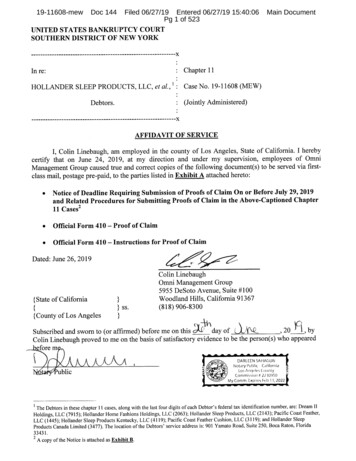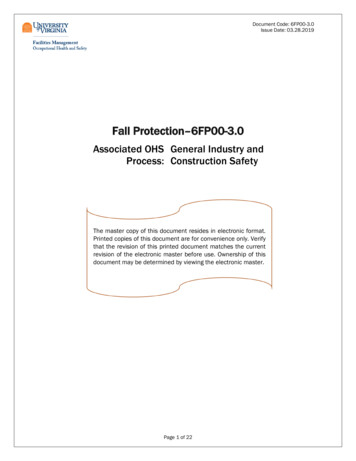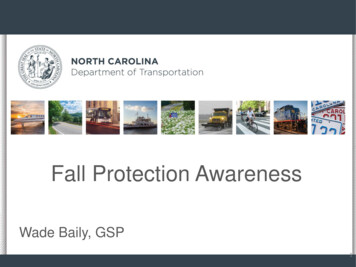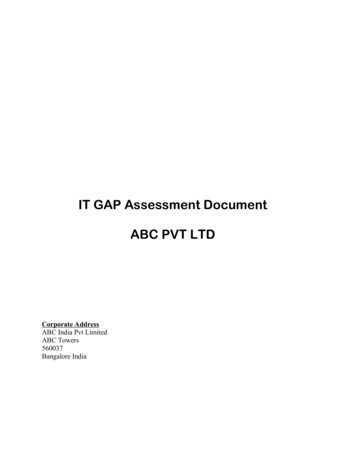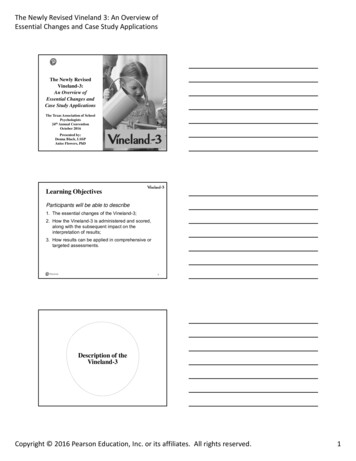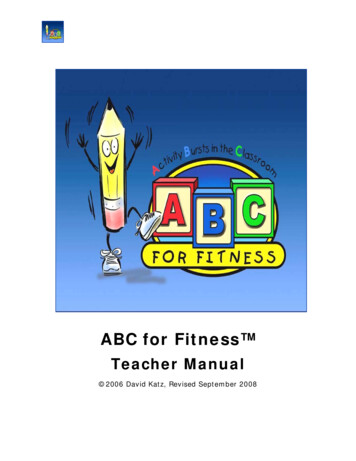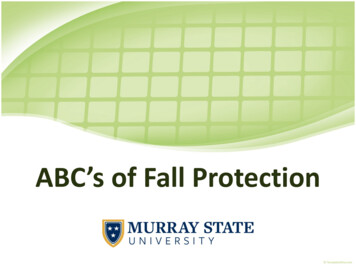
Transcription
ABC’s of Fall Protection
Training Objective After the lecture, attendees will be able toidentify fall arrest equipment byunderstanding the ABC principle to asatisfactory level.
What is fall protection? Fall protection is the backup system plannedfor a worker who could lose his or her balanceat a height, in order to control or eliminateinjury potential. Fall protection must be provided whenworkers are at:– 4 feet – general industry– 6 feet – construction
Why is fall protection important? Falls from heights can cause serious injury ordeath to workers. DOL lists falls as one of the leading causes oftraumatic occupational deaths. 206 reasons!
When Stopping A Fall Fall arrest system must– Limit max force on an employee to 1,800 poundswhen used with a body harness.– Be rigged so that an employee cannot free fallmore than 6 feet.– Bring an employee to a complete stop and limitthe employee’s max deceleration distance to 3.5feet.
Fall Distance
ABC’s of Fall Protection A Anchorage B Body Harness C Connecting Device
A Anchorage Point Also known as the tie-off point, this is thepoint of attachment for the lanyard or lifeline. Anchor must support 5,000 lbs of pressure ortwice the expected load. Anchor points can be permanent, others areremoved once the work is completed.
A Anchorage PointI-Beam Adjustable StrapRoof Tie-OffPermanent Roof-top
B Body Harness Body harness is the combination of straps thatdistribute the force of the fall over the chest,thighs, waist, pelvis and shoulders. Harnesses have buckles and adjustable strapsfor proper fitting. Some are sized while othersare universal. Connecting D-ring should be located rightbetween the shoulder blades.
B Body Harness
C Connecting Device Connecting devices link the body harness tothe anchor point. Lanyards, retractable lifelines and shockabsorbing lifelines are different types ofconnecting devices.
The picture can't be displayed.C Connecting Device
It’s a System Individually these components will notprovide protection from a fall. However, when used properly and inconjunction with each other they form apersonal fall protection system that becomesa vital part of your safety.
Equipment Do’s and Don’ts Do inspect for wear and damage before use. Do remove from service after a fall forinspection. Don’t use to lift materials. Don’t attach to guardrails or hoists.
Webbing Webbing are the ropes and straps used inlifelines, lanyards, and strength componentsof body harnesses. The webbing must bemade of synthetic fibers.
Snaphooks Snaphooks must have a minimum tensilestrength of 5,000 pounds, and be proof-testedto a minimum tensile load of 3,600 poundswithout cracking, breaking, or becomingpermanently deformed.
Rollout Rollout occurs when the snaphook disengagesfrom the anchor point.
Fall Protection Rescue The hierarchy of fall protection rescue issimple:– self-rescue by the worker who has fallen,– assisted rescue by co-workers, and, if allelse fails,– calling in professional rescuers, Murray FireDepartment.
Good or Bad Fall Protection?A?B?C?
Good or Bad Fall Protection?A?B?C?
Good or Bad Fall Protection?A?B?C?
Review Defined fall protection Discussed importance of fall protection Identified ABC’s– Anchorage– Body Harness– Connecting Device System works together Identified good and bad examples
What is fall protection? Fall protection is the backup system planned for a worker who could lose his or her balance at a height, in order to control or eliminate injury potential. Fall protection must be provided when workers are at: -4 feet -general industry -6 feet -construction

